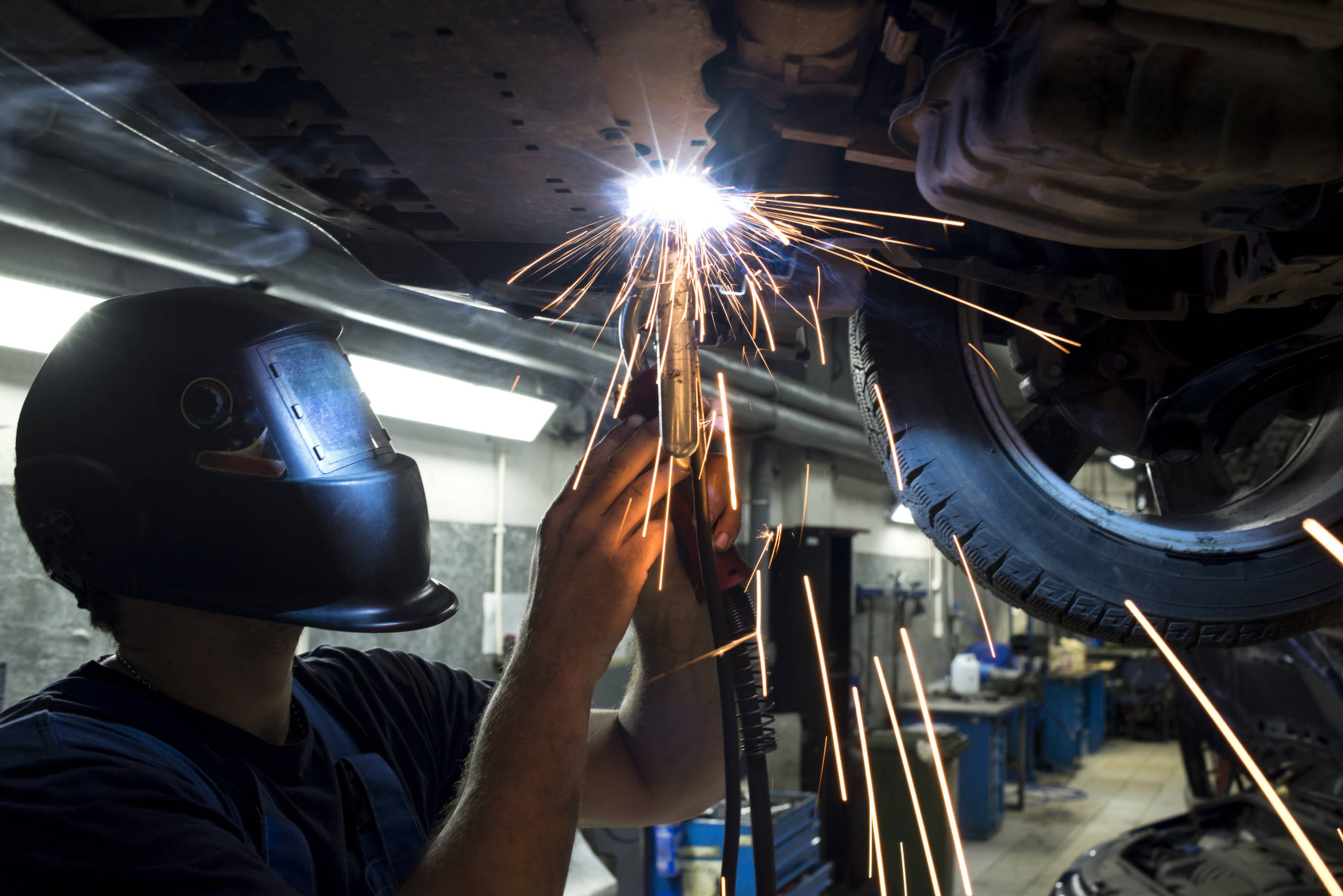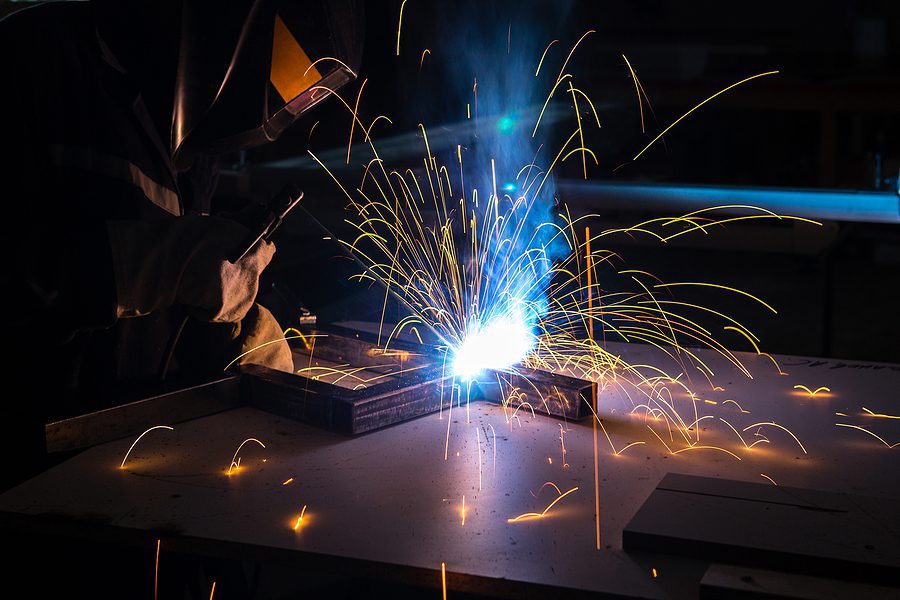Common Welding Repair Service Issues and Exactly How to Address Them Successfully
Welding fixings commonly run into a series of concerns that can endanger the stability of the end product. Typical issues include inadequate penetration, porosity, and misalignment, among others. Each defect offers special difficulties that need certain methods for resolution. Understanding these problems is necessary for welders intending to improve their skills and results. This discussion will check out these common welding repair service concerns and effective approaches to resolve them.
Insufficient Infiltration
Inadequate penetration occurs when the weld steel stops working to totally fuse with the base product, leading to weak joints and possible architectural failings. This issue commonly originates from insufficient warmth input, wrong electrode angle, or incorrect welding rate. Welders may come across inadequate infiltration due to a miscalculation of the necessary specifications for a specific material thickness or type. In addition, contamination on the base product's surface area can prevent efficient bonding, intensifying the problem. To attend to insufficient penetration, welders ought to guarantee ideal setups on their devices and maintain a tidy job surface. Routine assessment of welds is recommended to identify any type of deficiencies early, allowing for prompt corrections and the avoidance of endangered architectural honesty in welded settings up.
Porosity
Porosity is a typical flaw in welded joints that manifests as little gas bubbles caught within the weld steel. This problem can jeopardize the stability of the weld, resulting in reduced toughness and prospective failing under stress. Montana Mobile Welding and Repair Fabrication. Porosity normally arises from contamination, dampness, or inappropriate welding techniques, which enable gases to escape into the liquified weld pool. To resolve porosity, welders should assure correct surface area preparation, preserve a tidy functioning environment, and use appropriate welding specifications. Furthermore, selecting the ideal filler product and shielding gas can mitigate gas entrapment. Regular evaluation and screening of welds can assist identify porosity early, guaranteeing timely corrective actions are taken, thereby maintaining the high quality and reliability of the bonded structure
Imbalance
Imbalance in welding can develop from numerous variables, including incorrect setup and thermal growth. Understanding the origin is necessary for efficient resolution. A number of improvement techniques are readily available to realign parts and assure architectural stability.
Reasons for Imbalance
Welding imbalance usually comes from a selection of underlying concerns that can compromise architectural integrity. One main cause is improper fit-up of components before welding, which can lead to voids and unequal surfaces. Variations in thermal development during the welding process can also result in distortion, specifically if the materials being joined have different coefficients of expansion. Additionally, poor fixturing and clamping might stop working to hold elements safely in place, leading to motion throughout welding. Poorly kept devices, consisting of welding devices and tools, might introduce disparities in the weld bead, more contributing to imbalance. Finally, operator mistake, stemming from inadequate training or experience, can also play a significant duty in developing misaligned welds.
Adjustment Methods Offered
Dealing with imbalance successfully calls for a combination of restorative strategies tailored to the specific problems at hand. One usual method is using components or jigs to hold parts in the appropriate placement throughout welding, making sure regular placement. In addition, preheating the materials can help in reducing distortion and boost fit-up. For substantial misalignment, mechanical realignment strategies, such as using hydraulic jacks or clamps, can be employed to remedy the placement before welding. Post-weld heat treatment might likewise be needed to ease stresses caused by imbalance. Lastly, careful assessment and change during the arrangement stage can stop imbalance concerns from ending up being significant issues, promoting a smoother welding process and boosting general architectural integrity.
Distortion
Distortion is a typical obstacle in welding that can occur from numerous factors, consisting of irregular heating & cooling. Comprehending the sources of distortion is crucial for carrying out reliable avoidance strategies. Addressing this concern not only improves architectural honesty however likewise enhances the overall quality of the weld.
Sources of Distortion
When based on the extreme heat of welding, products commonly undertake changes that can cause distortion. This sensation largely arises from thermal expansion and contraction during the welding process. As the weld area heats up, the material broadens; upon cooling, it contracts, which can create interior tensions. In addition, uneven heating across a workpiece can exacerbate these stresses, resulting in warping or bending. The sort of material likewise plays a significant duty; metals with varying thermal conductivity and coefficients of growth may respond in a different way, leading to unpredictable distortions. Poor joint design and inadequate fixturing can add to misalignment throughout welding, enhancing the likelihood of distortion. Understanding these causes is essential for reliable welding repair and avoidance approaches.
Prevention Techniques
Efficient avoidance techniques for distortion throughout welding concentrate on regulating warmth input and making certain correct joint design. Maintaining a constant warm input assists to minimize thermal growth and contraction, which can bring about distortion. Utilizing techniques such as pre-heating the work surface can likewise reduce the temperature gradient, advertising consistent heating. In addition, picking proper joint layouts, such as T-joints or lap joints, can improve stability and minimize stress concentrations. Carrying out proper fixturing to secure the work surfaces in area better aids in keeping positioning throughout the welding process. Lastly, staggered welding sequences can distribute warmth much more equally, preventing localized distortion. By using these techniques, welders can greatly decrease the probability of distortion and enhance the general high quality of their welds.
Breaking
Breaking is an usual problem come across in welding repair services, often arising from numerous elements such as inappropriate air conditioning rates, material selection, or insufficient joint prep work. The incident of cracks can greatly endanger the integrity of the weld, bring about prospective failings throughout procedure. To resolve this problem, welders should first analyze the source, making certain that materials work and properly chosen for the certain application. Furthermore, managing the cooling price during the welding process is crucial; fast cooling can cause tension and result in cracking. Proper joint design and preparation additionally add to decreasing the danger. Applying these techniques can boost weld quality and resilience, ultimately decreasing the likelihood of breaking in completed weldments.

Insufficient Blend
A significant concern in websites welding fixings is insufficient fusion, which happens when the weld steel does not appropriately bond with the base product or previous weld passes - Montana Mobile Welding and Repair Welding. This issue can lead to weak points in the joint, potentially endangering the honesty of the welded structure. Aspects contributing to insufficient blend include not enough heat input, inappropriate welding technique, and contamination of the surfaces being signed up with. To address this issue efficiently, welders need to guarantee proper pre-weld cleaning and surface prep work, along with readjust their welding specifications to accomplish sufficient infiltration and fusion. Regular evaluation during the welding procedure can also help identify insufficient combination early, enabling timely rehabilitative actions to boost the total high quality of the weld
Overheating
While welding repairs can improve architectural stability, overheating presents a significant challenge that can bring about product degradation. Too much warm throughout welding can modify the mechanical residential or commercial properties of metals, causing decreased toughness, boosted brittleness, and bending. This sensation is especially important in high-stress applications where architectural dependability is paramount. Recognizing getting too hot can include aesthetic inspections for staining or distortion, as well as keeping track of temperature level during the welding process. To minimize the threats connected with getting too hot, welders must use proper strategies, such as regulating warmth input, readjusting travel speed, and utilizing suitable filler products. Furthermore, carrying out pre- and post-weld warm treatments can help bring back material homes and boost the overall top quality of the fixing, guaranteeing lasting efficiency and safety.
Frequently Asked Questions
What Are the Usual Indications of a Welding Problem?

Exactly How Can I Check My Welds for High quality?
To check welds for top quality, one can make use of visual assessments, ultrasonic screening, and radiographic methods. Each strategy guarantees structural honesty, recognizes issues, and validates adherence to specified requirements, ultimately improving the dependability of the welded joints.
What Safety Precautions Should I Take While Welding?
When welding, one should focus on safety by putting on suitable individual protective tools, making sure proper air flow, securing combustible materials visit the website away, preserving a clean workspace, and knowing environments to stop injuries and crashes.
Can I Fix a Weld Without Remodeling the Entire Joint?
Repairing a weld without remodeling the entire joint is possible, relying on the damage (Montana Mobile Welding and Repair Belgrade Welding). Strategies such as grinding, adding filler product, or using a welding process can effectively deal with details problems while preserving the bordering structure
What Devices Are Essential for Reliable Welding Fixes?
Essential tools for efficient welding repairs consist of a welding maker, cable brush, mill, safety equipment, clamps, and filler products. Each device plays an important function in ensuring high quality and safety during the fixing procedure. Porosity usually emerges from contamination, wetness, or inappropriate welding techniques, which permit gases to get away right into the liquified weld swimming pool. Badly kept tools, including welding equipments and devices, may introduce incongruities in the weld grain, additional contributing to misalignment. When subjected to the intense heat of welding, materials often undertake modifications that can lead to distortion. Fracturing is an usual issue come across in welding repairs, typically resulting from numerous variables such as improper cooling rates, product option, or insufficient joint preparation. A considerable problem in welding repairs is incomplete combination, which takes place when the weld steel does not properly bond cored wire with the base material or previous weld passes.